VibTech QAT-365 Quantitative Assessment Tool
Desktop Method for Assessing The Risk of Pipework Vibration Fatigue Failures
VibTech Ltd has developed a number of tools designed to supplement the training courses to enable engineers to perform Pipework Vibration Assessments based upon the Energy Institute publication: ‘Guidelines for the Avoidance of Vibration Induced Fatigue Failure in Process Pipework’, 2nd edition 2008
The Energy Institute guidelines contain 3 sections which provide really powerful ‘Quantitative Assessment’ methods
for calculating the Likelihood of Failure (LOF) of pipework for the following cases:
- Section T2 for 12 No. Main Line excitation mechanisms
- Section T3 for 4 No. types of Small Bore Connections (SBC)
- Section T4 for 3 No. geometries of Thermowell
These calculation methods are really useful in the following assessments
Calculations at the design stage
Assess excitation possibilities during trouble-shooting
Design of Corrective Actions
Quantitative Main Line ‘Likelihood of Failure’ (LOF)Assessment Tool
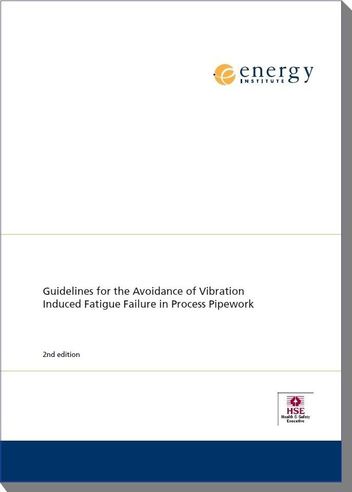
Section T2 of the Energy Institute Guidelines offers Quantitative Assessment methods of calculating the ‘Likelihood of Failure’ of main line pipework for several common excitation mechanisms, including:
- Flow Induced Turbulence (Qualitative)
- Flow Induced Turbulence – Quantitative
- Mechanical Excitation from machinery
- Reciprocating/Positive displacement pumps and Compressors
- Rotating Stall of Centrifugal compressor
- Flow Induced Pulsation – Dead-leg Branch
- Acoustic Induced Vibration – High Frequency Acoustic Excitation
- Surge – Gas valve opening
- Surge – Liquid valve closing
- Surge – Liquid valve opening
- Flashing
- Cavitation
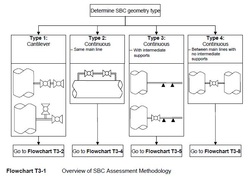
Section T3 relates to 4 types of Small Bore Connections (SBC), including:
- Type 1 – Cantilever
- Type 2 – Continuous – Same Main Line
- Type 3 – Continuous – Same Intermediate Supports
- Type 4 – Continuous – Between Main Lines
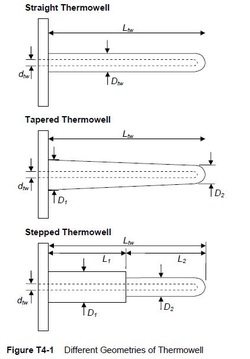
Section T4 relates to 3 types of Thermowells, including:
- Type 1 – Straight
- Type 2 – Tapered
- Type 3 – Stepped
The Quantitative Assessment Problem
Although one of the most powerful risk assessment tools, the Quantitative Assessment method, is undoubtedly one of the most daunting sections of the EI Guidelines and takes considerable mathematical skill to accurately negotiate the various Flowcharts. One of the problems in following the flowcharts is that the flow is not continuous. At each step, the calculations will yield a decision process, often requiring additional calculations out with the current flowchart, before the process can be continued along the appropriate path.
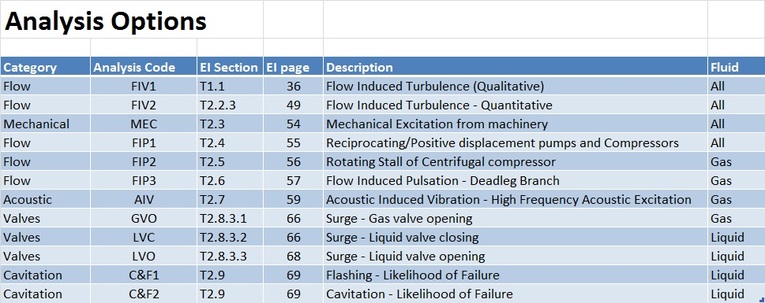
The VibTech Solution
VibTech believes that this powerful calculation of LOF should be available to all design and pipework assessment engineers and so has worked to produce an Excel based engineering tool which completely takes away the requirement to perform a single calculation or make a single decision. By selecting an analysis code corresponding to the required LOF calculation, the user is presented with a clear and concise data input form, which asks in advance for all data required for every stage for the following LOF calculation quantitative analysis. No sooner than the last data value has been entered, the calculated LOF value is displayed. The spreadsheet accepts inputs from 1000 columns of data, enabling easy analysis of multiple pipe sections and enabling powerful ‘what-if’ comparisons. For example by entering data for one pipe section over several columns, the user can easily evaluate the effects on LOF of modifying any of the input parameters such as pipe diameter, wall thickness, span length, flow rates, valve closure times etc.

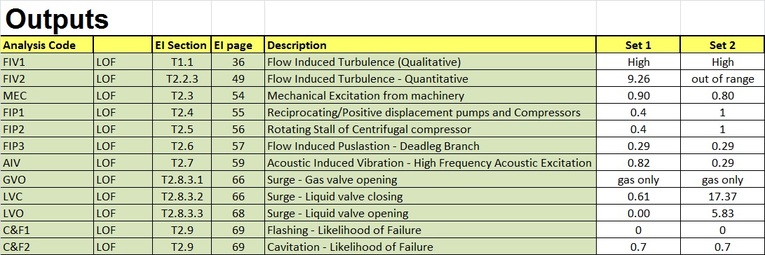
How the VibTech QAT Works – A Step by Step Method
1. Ideally arrange for key personnel to attend a VibTech 2 or 3 day training course (even though the calculations are done for you, the person doing them should still be deemed to be competent)
2. Purchase a commercial copy of the VibTech ‘Quantitative LOF Assessment’ spreadsheet (see price list in ‘Downloads’ section)
3. Select a Code corresponding to the required Quantitative LOF Assessment excitation Mechanism e.g. FIV, FIP, AIV etc
4. The spreadsheet will then produce a comprehensive input form, including all parameters required fro calculations plus all data required for any decision making processes.
5. Simply fill in the input form from process data and mechanical data
6. As soon as the last value is input, the calculated LOF is displayed together with several intermediate results (useful for data validation).
7. The spreadsheet enables calculations to be performed for up to 250 conditions at a time and is very useful for performing ‘what-if’ assessments. i.e. copy same data into the next columns but vary some key parameters such as flow velocity, pipe diameter or wall thickness to immediately see the effects on calculated LOF.
8. An overall combined results table shows LOF results for each position for each excitation mechanism.
Licensed Software


The VibTech QAT Quantitative Analysis Tool is available in 3 cost-effective licensed versions:
QAT-100 Cost-effective 100-day project license
QAT-365 Annual License
QAT-247 Perpetual License
Users of the software are required to sign a formal license agreement.
Competent Staff
The VibTech Quantitative Main Line LOF Assessment Tool has been designed to remove the need for the user to perform a single calculation, however, the Quantitative Assessment Tool should only be undertaken by engineers who are deemed competent to perform such analysis and so VibTech would always recommend that engineers have received a suitable level of training

